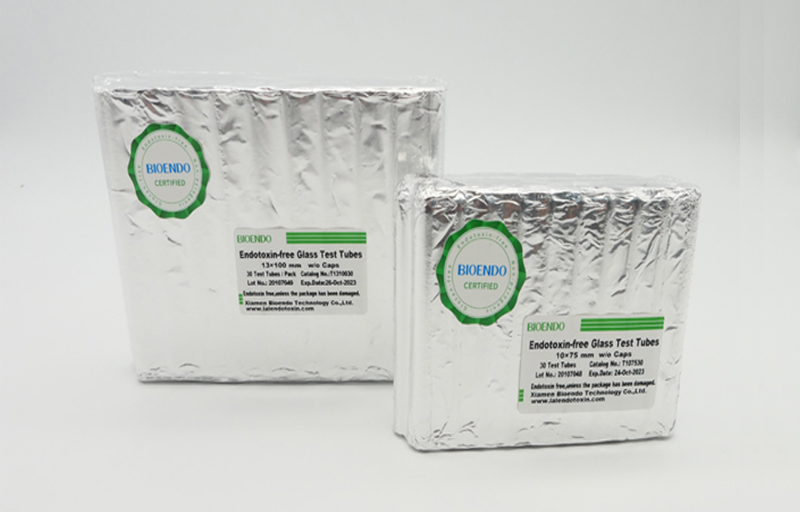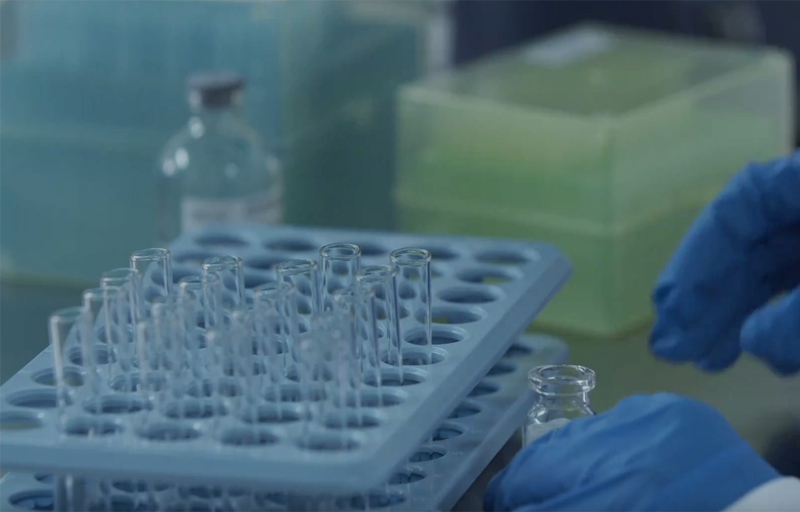Glass tubes with depyrogenation processing are necessary in the endotoxin test assay to ensure the accuracy and reliability of the test results. Endotoxins are heat-stable molecular components of the outer cell wall of some gram-negative bacteria, and they can cause severe illness and even death in humans if they are present in medical products or devices.
To detect endotoxins, the assay uses reagents that contain Limulus Amebocyte Lysate (LAL) or called Lyophilized amebocyte lysate, an extract from the horseshoe crab’s blood cells that has a clotting mechanism that is activated by endotoxins. However, glass tubes that have not been depyrogenated can interfere with the LAL test assat by activating its clotting mechanism and producing false positive results. Therefore, glass tubes used in the endotoxin test assay must be depyrogenated to remove any endotoxins that may be present and to prevent activation of the LAL reagent. This ensures that the results of the endotoxin test are accurate and reliable and that patients are not exposed to harmful levels of endotoxins. and ensure the parenteral drugs safety in the pharmaeuticals, protains, cell culture, DNA and so on.
The necessity of endotoxin-free glass tubes use in the endotoxin detection assay operation:
Endotoxin-free glass tubes are an essential component of any endotoxin test assay. These glass tubes are designed to minimize the risk of endotoxin contamination during the testing process, ensuring accurate and reliable results.
One of the key features of endotoxin-free glass tubes is their chemical composition. These tubes are made from high-quality borosilicate glass, which is known for its exceptional resistance to chemical corrosion. This makes them ideal for use in endotoxin testing, as they can withstand exposure to a wide range of test compounds without degrading or contaminating the sample.
Another important feature of endotoxin-free glass tubes is their cleanliness. These tubes are carefully cleaned and sterilized before use to remove any potential sources of contamination. They are also rigorously tested for endotoxin contamination, ensuring that they are free from any trace amounts of this harmful substance.
In addition, endotoxin-free glass tubes are designed to be easy to use. They are typically available in a range of sizes and configurations to accommodate different sample volumes and testing methods both qualitative endotoxin test assay and quantitative endotoxin test assay. They are also compatible with a variety of sample preparation and testing equipment, making them a versatile and convenient choice for endotoxin testing laboratories.
Overall, endotoxin-free glass tubes play a crucial role in the accuracy and reliability of endotoxin testing. Their high-quality construction, purity, and ease of use make them an essential component of any successful endotoxin test assay.
Bioendo Endotoxin-free glass tubes with size 10*75mm, 12*75mm, 13*100mm and 16*100mm for the dilutions procedures and reaction procedures.
Endotoxin-free glass tubes are meet the top level standard of endotoxins less than 0.005EU/ml.
Endotoxin-free glass tubes should be used in the gel clot endotoxin test assay to prevent false-positive results.
Endotoxins are bacterial cell wall components that can contaminate laboratory equipment, including glass tubes.
A gel clot endotoxin test assay is used to detect the presence of endotoxins in a sample. In this assay, a clot is formed in the presence of endotoxins. This clot formation is then compared to a control to determine the endotoxin concentration.
Using endotoxin-free glass tubes helps to ensure that the endotoxin detection is accurate. This is because endotoxins can adhere to the surface of glass tubes and interfere with the assay results.
To ensure that the glass tubes used in the gel clot endotoxin test assay are endotoxin-free, they should be washed with a detergent and then thoroughly rinsed with endotoxin-free water. Additionally, they should be sterilized using autoclaving or dry heat sterilization.
In conclusion, using endotoxin-free glass tubes in the gel clot endotoxin test assay is essential to ensure accurate detection of endotoxins. These tubes should be thoroughly cleaned and sterilized to eliminate any potential contamination.
Post time: Jun-02-2023




